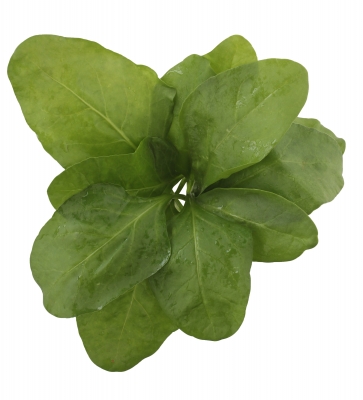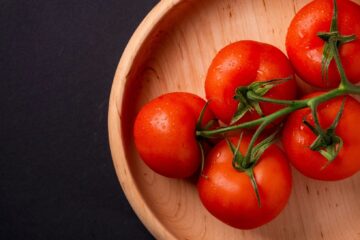Like it or not, juicing and blending is taking us by storm. Seen as quick and easy way to dose up with essential vitamins, minerals and cancer-fighting antioxidants, smoothies and juices have become a much larger part of our diet.
How they help…
Over the years, plants have been bred to have less and less bitterness (often an indicator of high phytonutrient content). As they have generally become less nutrient-rich, blending up a larger quantity of them seems like a good way to get the nutrients we need.
It’s easy to see the benefits of drinking juices and smoothies:
- Intense delivery of vitamins, minerals, phytonutrients
- Convenient
- Easy way to reach our 7-a-day
…and how they hinder
There are a few problems with drinking juices and smoothies, especially when viewed from an Ayurvedic perspective:
- Fibre. Juicing totally removes the fibre which you need for gut and heart health. Smoothies, however, retain the fibre.
- Sugar. Fruit contains a lot of sugar. When blended, the sugar is even more readily available as it isn’t trapped within the cell walls, thus making it a high GI food (causing spikes in blood sugar which if often repeated, can lead to diabetes and weight gain). Eating a whole piece of fruit with its buffering effect of slowly ingested fibre creates a slower release of sugar. The high sugar levels will also play havoc with your teeth.
- Cold. If you add frozen fruit, ice or cold water to the smoothie, it will inevitably be cold and this will reduce the power of your digestion (see here for why). You will be consuming all these fabulous vitamins and nutrients but if your digestion is compromised, you won’t be absorbing or assimilating them. Worse yet, you could end up with more toxins than you started out with!
- Raw. Raw food is difficult to digest. Often people find that raw food is initially very energising as it breaks down the tissues (including fat, which many people find desirable). If continued for a long time this causes depletion and loss of resilience, energy and immunity. In smoothies, the tough-to-digest quality is partially offset as the vegetables are thoroughly liquidised.
- Bad food combinations. Certain food combinations are noted in Ayurveda as inhibiting good digestion – the main one being the combination of raw fruit and other food. This is thought to be because fruit is digested faster than other foods and that if combined together, the fruit over-ferments in the digestive tract, causing digestive problems. Adding oils, seeds and dairy to a smoothie containing fruit is a big digestive no-no. However, if fruit is only combined with simple vegetables, thoroughly liquefied, this effect is much reduced.
- Volume. You consume more than you need when you eat cool liquified food as the quick consumption bypasses your body’s messages to stop when it’s had enough. Overeating also impairs digestion.
How you can make smoothies work for you
This all sounds pretty depressing doesn’t it?! Do not lose hope. You can make smoothies work for you by bearing these points in mind and avoiding the main pitfalls. You can then have healthy smoothies that don’t mess up your digestion and don’t cause more problems than they solve.
Follow these guidelines to enjoy healthy smoothies:
- Keep them simple (fruit, vegetables, herbs and water). No other ingredients. Do not add oils, fats, dairy, seeds, nuts, protein powders or anything else which isn’t a fruit, vegetable, herb or water. Eat these separately or, in the case of protein powders, not at all.
- Minimise fruit. Have the bare minimum or even no fruit. Make sure the fruit is ripe and don’t overdo sour tastes. Try sweet apples, pears, apricots, sweet berries (especially blueberries), cherries, fresh figs, grapes, plums, pomegranate and avocado.
- Lots of vegetables. Greens are excellent, experiment with kale, spinach, rocket, beetroot leaves, chard, pak choi, green peppers, radicchio, asparagus, dark green or red lettuces, young nettles and dandelion leaves/flowers. Remember to rotate greens weekly to avoid alkaloid build-up. You can also add sprouts of alfalfa, sunflower, wheatgrass or mung. Root vegetables such as beetroot, pumpkin, squash, sweet potato and carrots are alright in small amounts only as these are more difficult to digest when raw.
- Add ginger and other herbs. Ginger will help with the digestion of the raw fruit and vegetables. Other herbs such as aloe vera, basil, coriander leaf, fennel and mint have fantastic health benefits.
- Room temperature or slightly warm. Use room temperature ingredients or even slightly warm water or tea. Don’t use ice or frozen fruit.
- Small quantities, not too often. Have a small glass, a few times a week, not more.
- Consume in spring and summer only. In spring we need to reduce kapha and the reserves of winter. We can do this by eating seasonal greens and therefore it is a great time for having some detoxifying green smoothies. The bitter taste of greens along with high water content also make them great for reducing pitta heat in the summer. In the summer you could also add some of the sweet vegetables as these reduce pitta too. Do not have juices and smoothies in the autumn and winter as these are times when we need the seasonal grounding and heavier foods. The cold, raw nature of the smoothies is in direct contrast to the types of foods we hope to consume in the vata seasons of autumn and winter.
- Drink at mid-day when digestion is strongest. The time of day when our digestive fire is at its peak and best able to digest more challenging foods is around mid-day.
- Know yourself. If you have poor digestion or have a vata constitution, do not have many smoothies. If you digest food well, without any bloating, diarrhoea or constipation, you will be able to stomach smoothies fairly well, as will most pitta constitution people. If you are overweight, have mucous or have a kapha constitution, you can have occasional smoothies which are mainly green and with very little fruit. If you begin to find you have digestive problems, gas, dryness of the body or even anxiety and mental agitation, you should stop having smoothies for a while. If you need help getting to know your constitution better, contact an Ayurvedic Practitioner.
As winter turns to spring, nature provides spring greens, spinach, cucumbers, watercress, radish leaves and lettuces. It’s green time. It’s time to lighten the diet and help the body shift the natural reserves it has built up over the winter. It is a perfect time for trying out some green smoothies. Bearing in mind the pointers above, embrace the coming spring and experiment with some of these green beauties.
Smoothie recipes
Here are some starter ideas for green smoothies, try a few different recipes and see what works for you.
Fresh and zingy green smoothie
I think this is just wonderful. It is more of an adult smoothie than a child one.
- 2 handfuls kale
- thin slice of root ginger
- ½ stick celery
- ~100ml room temperature water
- 1 small sweet apple
- juice of ¼ lemon or lime
- 3cm or more of cucumber (optional)
Blend together the kale, ginger, celery and water until well blended.
Add apple, cucumber (if using) and lemon juice and blend well.
Drink straightaway.
Printable recipe here.
Creamy and child-friendly green smoothie
Two of my three children like this, the other is not a green-smoothie man.
- Two handfuls of spinach
- ~150ml of room temperature water
- 4cm unpeeled cucumber
- 1 tsp lemon juice or juice of ¼ lemon, to taste
- ¼ pitted and peeled avocado
- 1 small peeled pear
- 1 small unpeeled apple
Blend the spinach and water.
Add all the other ingredients and blend well.
Drink straightaway.
Printable recipe here.
Simple and universally-liked green smoothie
Even the green-smoothie averse child likes this one!
- 2 handfuls grapes
- 2 handfuls spinach
- ~125ml room temperature water
Add all ingredients and blend well.
Drink straightaway.
Printable recipe here.
Smoothies can be very beneficial for cleansing and lightening the body, if made and drunk in a mindful way. Enjoy the green!
Until next time, take care of yourselves.
Kate
Author: Kate Siraj, Ayurvedic Practitioner, BSc Ayurveda, MChem (Oxon), MAPA.
© The Ayurveda Practice
Photos thanks to freedigitialphotos.net







3 Comments
Fresh and zingy green smoothie - The Ayurveda Practice · March 9, 2016 at 14:28
[…] the pros and cons of drinking smoothies, see here. Print Fresh and zingy green smoothie Author: Kate Recipe type: Drinks Prep […]
Simple universally-liked green smoothie - The Ayurveda Practice · March 16, 2016 at 12:37
[…] For how and when to have smoothies, see here. […]
Banish sugar cravings - The Ayurveda Practice · March 17, 2017 at 14:00
[…] . These rollercoaster blood sugar levels could be coming from caffeine, high GI food (including juices and smoothies), often eating carbohydrates without some form of protein or overuse of […]